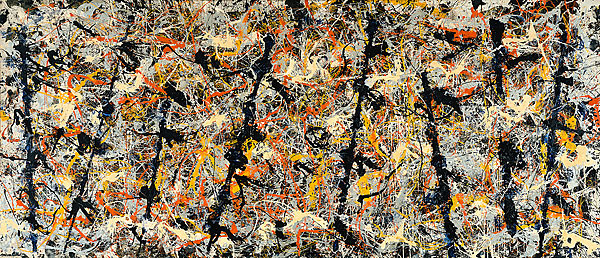Blue Poles is often referred to as Number 11, 1952 and is considered one of Pollock's finest paintings from his abstract series.
The original artwork is now on display at the National Gallery of Australia where it has been since 1973. At that time, the purchase was considered controversial but has now become one of the major draws of this prestigious gallery.
Number 11, 1952 had been the original title of this artwork, as it came during a stage in Pollock's career when he preferred to leave his work untitled. Later on the painting was renamed as Blue Poles and this helps to further distinguish from the rest of his paintings. It is generally believed that the artist himself came up with this new title.
This particular piece was first seen in public many years before it's controversial purchase by the country. An exhibition in 1952 announced it to the world and it was soon to receive significant interest, leading to several exchanges of the piece for large sums. Australia, notably the then Prime Minister, attracted criticism for sanctioning it's purchase at a time when abstract art was not accepted to the extent that it is today. That decision now appears to have been inspired and continues to boost the reputation of the gallery which has held it ever since.
Blue Poles
In 1952 Pollock was in an experimental stage in his career where his choice of medium for his work was becoming more and more varied. Number 11, or Blue Poles as it is now known features fragments of glass inserted into areas of paint. The artist was also using sand at this time too, ensuring each artwork differs from the next. Today the idea of mixed media is very much commonplace, and it is artists like Jackson Pollock who brought it in.
This video covers the painting in detail and comes from the Australian National Gallery, where it is on display. This video features stunning closeups of the painting and is great for getting across the sheer size of this work.
Pollock was known to have been drinking whilst creating this artwork, and this was the case for much of the rest of his career as the artist continued to struggle with depression and other personal problems which were eventually to lead to his downfall. He would lay the original canvas on the floor from where he felt closer and more connected to his work, feeling very much a part of the painting himself as he set about layering up the work with different mediums.
Several key artists are known to have visited Jackson in his studio around the time that he painted Blue Poles, one of which was Barnett Newman. Newman himself was also friends with Mark Rothko, and their joint effort can be seen in the Rothko Chapel.




